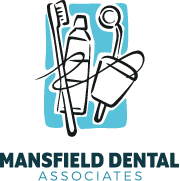Whether you have damaged, chipped, or cracked teeth or if you have teeth imperfect only in appearance, you have options like porcelain veneers or dental bonding to improve your smile. Dental bonding is when a composite resin is applied to a tooth. The resin is color-matched to the tooth to look natural in color. Dental bonding does have limitations. For more extensive restoration, porcelain veneers are more often used. But bonding can be the more affordable and time-saving solution. When do you know if it is the right choice?
Most common uses
The composite resin of dental bonding can be used to cover up chips or cracks. If you have a tooth that is smaller than others, the resin can be used to match the size of your other teeth. The same can be done to adjust color or shape of one tooth to match the others. Dental bonding can be used to fill in gaps between teeth. It can also be used to cover exposed roots of teeth or to restore small areas where cavities were cleaned.
Advantages and disadvantages
Dental bonding is much more affordable than other restoration options. It is usually much faster, as well. Dental bonding is not invasive and typically does not require any anesthesia. Unlike other options, bonding does not required the tooth to be trimmed, so the integrity of the tooth can stay intact. The disadvantages of dental bonding are that it cannot cover large areas. It is more susceptible to cracking or detaching from teeth than other options.
Your dentist can help determine if dental bonding is right for you
If you think that dental bonding might be for you, Dr. Jones and Dr. Harris are ready to serve your smile. Schedule a consultation at Mansfield Dental Associates by calling 817-473-6227. Located in Mansfield, TX, we also welcome patients and families from all surrounding communities including South Arlington, Kennedale, Southeast Ft. Worth, Alvarado, Midlothian, and more.





Recent Comments